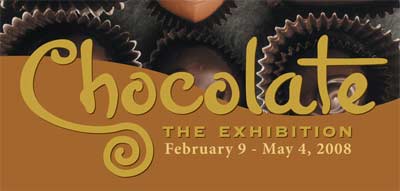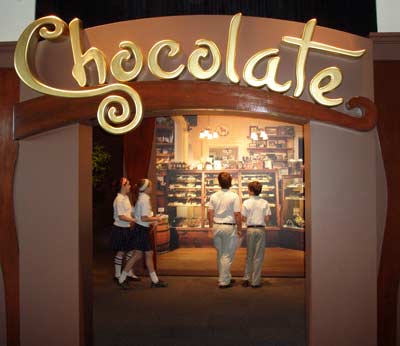Did You Know?
About the cacao tree
- The seed pods of the cacao tree grow not on its branches but directly on the trunk.
-
Each pod is about the size of a pineapple and holds thirty to fifty seeds - enough to make about seven milk chocolate or two dark chocolate bars.
- Cacao flowers are pollinated by midges, tiny flies that live in the rotting leaves and other debris that fall to the forest floor at the base of the tree. Those midges have the fastest wingbeats in the world: 1,000 times per second!
- Cacao trees today are endangered by natural threats, such as the witch's broom fungus and other diseases and pests. Along with the rest of the rainforest, they're also threatened by lumber companies, which harvest the taller trees that shelter the cacao and help maintain the population of midges.
- Cacao seeds are not sweet. They contain the chemicals caffeine and theobromine, which give them a bitter taste.
- The scientific name of the cacao tree, Theobroma, means "food of the gods."
- Cacao is not related to the coconut palm or to the coca plant, the source of cocaine.
- Africa is now the source of more than half the world's cacao, while Mexico today provides only 1.5 percent.
Chocolate as food and medicine- It takes 4 cacao seeds to make 1 ounce of milk chocolate, and 12 seeds to make 1 ounce of dark chocolate.
- Although we tend to think of chocolate as a solid today, for 90% of its history it was consumed in liquid form.
- Some of the earliest European cocoa-makers were apothecaries seeking medicinal uses of the plant.
- Cacao seeds contain significant amounts of naturally occurring flavonoids, substances also found in red wine, green tea, and fruits and vegetables; flavonoids are connected with a reduced risk of cardiovascular disease and some cancers.
- On the other hand, chocolate carries a heavy load of saturated fats and calories; there are much healthier ways to get the same benefits.
- Chocolate contains two stimulants also found in coffee - caffeine and theobromine - but in relatively small amounts. Fifty M&Ms, for example, have about as much caffeine as a cup of decaffeinated coffee.
Who eats chocolate?- Not Africans. A great deal of chocolate is grown in Africa, but mostly for export.
- Not a lot of Asians. Although chocolate's popularity is growing in China and Japan, there's still comparatively little chocolate culture in Asia. The Chinese, for example, eat only one bar of chocolate for every 1,000 eaten by the British.
- Mexicans consume chocolate more as a traditional drink and a spice than as a candy. They use it to make the wonderful sauce called mole, and offer chocolate drinks at wedding ceremonies and birthday parties.
- Americans for sure…an average of 12 pounds per person per year. In 1998, that came to a total of 3.3 billion pounds. (Americans spend $13 billion a year on chocolate.)
- Definitely Europeans! As far back as the late 1700s, the people of Madrid, Spain consumed nearly 12 million pounds of chocolate a year. Today, 15 of the 16 leading per-capita chocolate-consuming countries are in Europe, with Switzerland leading the pack. (The U.S., as of 1998, was #9.)
It's a lot more fun to see the exhibits and to smell and taste the chocolate than to read these fun facts about chocolate. But time is running out to see the mouth-watering Chocolate: The Exhibition at the Great Lakes Science Center. The Chocolate Exhibition runs through Sunday May 4.
Admission to the exhibition is free to Great Lakes Science Center members. Exhibition entry is $12.50 for adult non-members and $8.50 for children, and includes admission to Great Lakes Science Center signature exhibits. Call (216) 694-2000 for ticket details.
Special rates are available for tour operators and groups. Call Act 2 Productions at (440) 248-4528.
The Great Lakes Science Center is one of the nation's leading science and technology centers, featuring more than 400 signature hands-on exhibits, themed traveling exhibitions, daily demonstrations and the awe-inspiring OMNIMAX® Theater.

Great Lakes Science Center is open daily 9:30AM to 5:30PM with discounted parking for guests in the attached 500-car garage. For more information, contact the Great Lakes Science Center at 216 694-2000 or visit www.GreatScience.com

